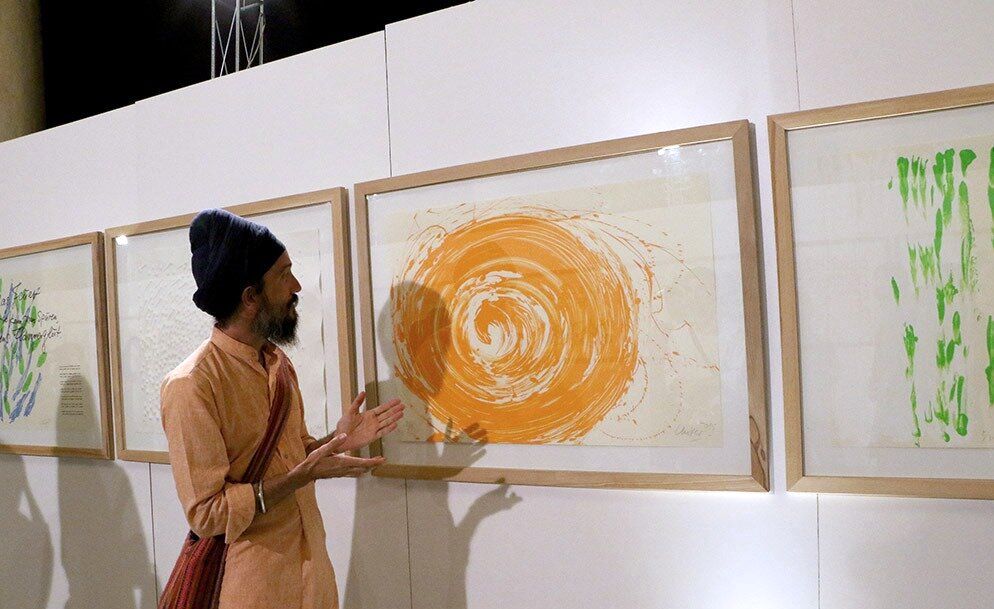Goethe Museum Dusseldorf hosting Gunther Uecker’s “Tribute to Hafez”

TEHRAN –(Iranart)- German sculptor and op artist Gunther Uecker’s exhibition “Tribute to Hafez” has been renamed “Orient and Occident Can No Longer Be Separated, Uecker-Hafez-Goethe” to be showcased at the Goethe Museum in Dusseldorf, Germany.
The show builds a bridge between the centuries and leads the view from the Orient to the Occident and also back from the West to the East with a film documentary about Uecker’s exhibition trip to Iran, the museum has announced.
Since 2016, Uecker has exhibited his works in an exhibition under the title “Tribute to Hafez”, traveling through all parts of Iran, where he has stopped eight times and has inspired local artists to create their own works.
“Tribute to Hafez” has been inspired by the ghazals of Persian poet Hafez. Uecker has created a collection of graphical works, in which the ghazals are transformed into colors and the sound of the poems into written images.
This method to translate spoken language into pictorial expressions has characterized the artist’s oeuvre since the 1970s.
In 2016, Uecker first displayed his collection in Shiraz where the mausoleum of Hafez lies. The Imam Ali (AS) Religious Arts Museum in Tehran, Isfahan Museum of Contemporary Art and Kerman Museum of Contemporary Art hosted the exhibition afterwards.
Parallel to the Uecker’s Goethe exhibition, the Breckner Gallery is also displaying sculptures by eight Iranian artists inspired by Uecker’s works until October 9.
The Iranian artists are Mohammadreza Yazdi, Ali Mahbubi, Morteza Tavassoli, Shahriar Rezai, Babak Montazeri, Arefeh Arad, Farzad Dashti and Neda Ayati.
The artists are from the Iranian cities of Tehran, Shiraz, Isfahan, Kerman, Bushehr, Kish, Mashhad and Rasht, which have hosted the exhibition since 2016.
Uecker is a member of the ZERO movement, best known for his signature use of nails arranged into tactile, sculptural paintings.
His oeuvre includes paintings, art objects and installations as well as stage designs and films. He is mainly interested in the Eastern European avant-garde of the 1920s and 1930s, but he is likewise fascinated by Asian cultures and their ideas.
Uecker’s works can be seen in collections and at large fairs in both the West and the East. His artistic creativity reached a climax in 2000 with the prayer room he designed for the rebuilt Reichstag building in Berlin.
The Goethe Museum Düsseldorf is one of the three major Goethe archives and research centers.
The exhibit has been organized to celebrate the 90th birthday anniversary of the artist and will be running until November 15.
source: Tehran Times

